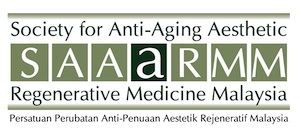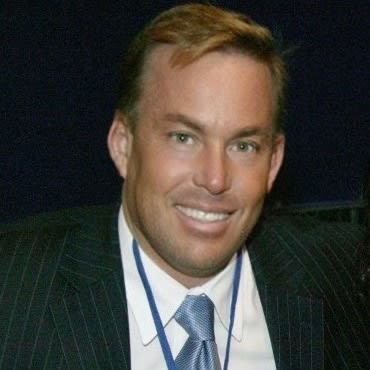PRESENTATION ABSTRACT: Run For Life! Barefoot, 8th Annual Malaysian Conference and Exhibition on Anti-Aging, Aesthetic and Regenerative Medicine 2011
Presented by Dr. James Stoxen DC
To be presented at the 8th Malaysian Conference and Exhibition on Anti-Aging, Aesthetic and Regenerative Medicine and 1st International Congress on Anti-Aging, Aesthetic and Regenerative Medicine, April 30 at 9:00am – May 2 at 12:00pm
Shangri-La Hotel, 11 Jalan Sultan Ismail, Kuala Lumpur, Malaysia
Running, as decades of studies have shown, is one of the best ways for your patients to put distance between themselves and the aging process. The medical quandary though has been determining when, for mature patients, the physical demands of running (e.g., the wear and tear on bone and joints) outweigh the enormous anti-aging benefits. Many physicians err on the side of caution by encouraging supportive footwear, orthotics and even advising patients prematurely to stop running.
THE BENEFITS
Firstly, let’s quickly review the enormity of the evidence helping to define regular running as a key anti-aging tool.
In short, running reduces the risks of fatal diseases in elderly people by 50 percent and increases quality of life by 16 years, according to research at Stanford University Medical Center. A 1984 study at the Stanford University School of Medicine, led by James Fries, MD and his team of research colleagues enlisted a group of 538 runners and a similar group of non-runners ages of 50 and above. The study found running reduces the risk not only of heart disease, but also delays cancer and neurological diseases such as Alzheimer’s.
Running strengthens bones to prevent osteoporosis in women and strengthens muscles to prevent muscle and bone loss, a common issue for aging men and women. Running has been proven to burn calories, strengthens the heart, lowers blood pressure and increases mental sharpness, making you more alert. While running, endorphins are released causing a feeling of euphoria and makes you feel happier. Running can also decrease memory loss in elderly people.
Unfortunately, these astonishing benefits are enjoyed by only a handful of patients while so many other people could be receiving them. Why? Because many adult patients cannot run because of their arthritic conditions that are contraindicated for running.
Why can’t many adults run as they did in their youth? Why can children run barefoot and many adults cannot?Is the inability to run barefoot the first sign of aging?
In this presentation I will provide evidence that it is.
The Harvard Barefoot vs Shod study published in Nature Magazine in 2010 allowed us to take a fresh and detailed look at the situation. The Harvard research (Lieberman et al., 2010) indicated that humans were able to run comfortably and safely when barefoot or in minimal footwear by landing with a flat foot (midfoot strike) or by landing on the ball of the foot before bringing down the heel (forefoot strike). Approximately 75% of shod runners heel strike. Lieberman et al., 2010) Their research indicated that barefoot runners use all kinds of landings, but predominantly forefoot strike, even when going downhill.
In heel striking, the collision of the heel with the ground generates a significant impact transient, a nearly instantaneous, large force. This force sends a shock wave up through the body via the skeletal system. In forefoot striking, the collision of the forefoot with the ground generates a very minimal impact force with no impact transient.
Are running shoes healthy for us? Is any binding or motion-altering device healthy for us while exercising, specifically running? We can initiate a change in this situation immediately by reevaluating the current standard of care.
Consider this: progressive regenerative medicine and anti-aging medicine is defined as the earliest detection, intervention and prevention of age-related diseases. The current standard of care only requires doctors to do evaluations of musculoskeletal systems when patients present with signs and symptoms. Anti-aging medicine exceeds this standard by practicing a form of medicine aimed at improving patients’ performance to the Olympic level for their age group.
Now, let’s breakdown what is addressed when assessing running as a medical tool, from an anti-aging perspective.
Allow me to introduce a new, innovative way to run – Barefoot.
I contend that this is the optimal way to run for an anti-aging lifestyle. If footwear binds the human foot what about the weakness that it has caused by the time we are in our 30s, 40s and later years? By this age the average human has stepped over 100,000,000 steps with a binding device on their feet. My clinical findings suggest that in these years the incidence of reduced joint play or locking of key joints in the foot and the kinematic chain that do not allow the mass to be absorbed safely into the human foot, results in higher impacts to the body.
In my presentation I will outline a treatment, rehab and training approach to release the human spring mechanism so it can function as it did in our youth absorbing the impacts of forces in running.
Taking a leap forward with this new approach to training for running barefoot that I will expose you to.
Performance running demands the combination of two types of strength defined as ‘absolute’ and ‘spring’ strength. A loss of either, makes running more risky, more stressful and damaging to the joints rather than increase health. In short without both training regimes running becomes another tool to accelerate aging by way of a breakdown of the spring mechanism leading to abnormal movement patterns, stress and strain, wear and tear, inflammation and every disease linked with inflammation aside from the pain.
Absolute strength has been addressed in studies and in clinical practice. We educate and coach our patients in the practice of resistance exercises to increase absolute strength of the weight bearing joints, thus improving general running ability. The development of spring strength is of paramount concern for athletes and their coaches to improve performance in running as it impacts speed, quickness, balance, agility and coordination, and is essential for safe directional changes, stopping and starting.
Spring strength training is called plyometrics and it’s required for safe and effective running biomechanics.
However few physicians understand the concepts of spring strength and plyometric training. In fact physicians commonly advise against this form of exercise as they feel it creates too much shock to the skeleton. Some fear it may even contribute to premature aging through the wear and tear theory. But running and spring training performed with a properly prepared spring mechanism and sound biomechanics do not damage joints. Research also shows that people who run regularly and those who don’t run at all have the same risks of developing osteoarthritis.
Spring strength improves the efficiency of walking and running. Having a finely-tuned spring mechanism acts as a shock absorber to better protect the skeleton from stress and strain and potential wear and tear, inflammation and pain. A healthy spring mechanism can recycle more natural energy back into the walking and running effort.
While evauluating patients, it is essential for physicians to employ specific testing to determine the exact level of absolute AND spring strength. This is pivotal in evaluating when it is safe for a patient to go from walking to jogging, running to sprinting and even jump training. After all, as speed increases from walking to running, forces increase from one times the body weight to five times the bodyweight. Stepping up to advanced plyometric jump training increases the force to ten times the bodyweight.
In this presentation I will clearly define absolute and spring strength, outline the differences between them and review what causes decreases in strength. Crucially, I’ll demonstrate new and innovative orthopedic testing methods I have developed for physicians to more accurately determine patients’ levels of absolute and spring strength through the incremental increased forces of standing (1x bodyweight), walking (1 – 2x bodyweight), running (3 – 5x bodyweight), sprinting (4 – 5x bodyweight), and jumping (estimated up to 10x bodyweight).
From that base, I’ll present new and innovative treatment, rehabilitation and training approaches to prepare your patients for running. Via video demonstrations, you’ll learn how to release the spring mechanism back into the gait courtesy of a new approach developed at Team Doctors and you’ll witness new exercise methods, which are performed barefoot to increase absolute strength and spring strength safely. We’ll also discuss lightening the load on the spring mechanism through proper diet and counseling.
Some people live to run. We all should be running – to live, for life.


